The “Upper Valley” | A Place of ‘Unexpected Discoveries’
By Christina Tree with Photos by Kindra Clinoff
YANKEE July/August cover story 2014
The “Upper Valley” along the Vermont/New Hampshire border is a collection of little-known small towns featuring the New England we all look for. You’ll find beauty, nature, soft adventure, art–and even what Forbes magazine called “the best gelato in America.”
Up we floated above Lake Fairlee, over green shores and kids’ summer camps. Whoosh … and up again, the hot-air balloon rising over a ridge and down over woods patched with cornfields, on toward the Connecticut River. On the Vermont bank, a dozen or so small figures were saluting the sunset with tai chi. We hovered briefly above an iron bridge spanning the narrow ribbon of water and drifted southeast over New Hampshire woods, settling down gently in a Lyme hollow.

Fairlee, Vermont, and Lyme, New Hampshire, are in the “Upper Valley,” a distinctive region that at its heart includes towns twinned on opposite banks along a roughly 40-mile stretch of the Connecticut River: from Windsor, Vermont, and Cornish, New Hampshire, in the south to Bradford, Vermont, and Piermont, New Hampshire, in the north. The name was coined in the 1950s by the Valley News to define its circulation area, reaching into both states. What fascinates me is the way it has stuck to an area that includes some of the same communities that in the 1770s attempted to form the state of “New Connecticut,” with Dresden (now Hanover, New Hampshire) at its center. Even today, the river remains more of a bond than a boundary.

Visitors can easily prowl both sides of the river. Interstate 91, set high above the Vermont bank, offers a quick route up and down the valley, but the old highways–New Hampshire Routes 10 and 12 and U.S. Route 5 in Vermont–thread through fields and villages. Older roads hug the river in places, while byways branch invitingly into the hills. Formal attractions are few, but you’ll find river landings, many farm stands, and frequent unexpected discoveries.
Last summer along Route 244 in the Vermont village of Post Mills (in the town of Thetford), I happened on a dinosaur, with a smaller dino beside it, both cobbled from recycled wood. The adult“Vermontasaurus” is 122 feet long and 25 feet high, fashioned by local students from a collapsed barn roof ; the “babysaurus” was born with blowdown from the larger sculpture, delivered by Hurricane Irene in August 2011. Several gliders and a tow plane rested in the large field, beyond which, a sign announced, is Post Mills Airport. Nothing told me that the long, nondescript wooden building beside the field housed one of the world’s largest collections of hot-air balloons, airships, and contraptions that were never meant to fly but do.
Brian Boland, creator of both the sculptures and the museum, was tinkering around out front. We struck up a conversation, and he told us that virtually nobody in this country was offering hot-air balloon rides in the 1970s when he began making his own and flying them. I soon learned that he’s known internationally as a hot-air balloon designer–and locally as the “Willy Wonka of the Upper Valley.”
Boland’s adventurous spirit is infectious. In short order I ventured up in his balloon, and then a few weeks later I returned and set out on the Connecticut River in a rented kayak, putting in a mile north of the Cornish-Windsor Bridge, New England’s longest covered bridge, backed by the hump of Mount Ascutney. The mountain is in Vermont, but the river and the bridge are in New Hampshire, because that’s what King George III decreed some two and a half centuries ago. Many disputes later, the boundary was set at the low-water mark on the Vermont side by the United States Supreme Court in 1933.
My takeout spot appeared three miles below the bridge. I climbed through a meadow to the barn that houses North Star Livery. Thirty years ago, just as the river was finally recovering from a half-century’s worth of abuse, Liz Drummond began renting canoes from her family’s riverside farmhouse on New Hampshire Route 12A in Cornish. Today dozens of boats are stacked against the barn, which doubles as check-in desk for North Star and stable for the draft horses that farrier John Drummond raises.
I picnicked at the Saint-Gaudens National Historic Site in Cornish. Sculptor Augustus Saint-Gaudens (1848-1907) is best remembered for his public pieces, including the Shaw Memorial on Boston Common and the General William T. Sherman statue at the entrance to Central Park, among many. With his wife, Augusta, he bought a vintage 1817 tavern, set high above the river here. Initially a summer retreat, “Aspet” became a year-round home; as commissions poured in, he added a studio and other buildings, and the property was elaborately landscaped. The house retains its original furnishings, but it’s the 195-acre grounds and the beauty of the reproduced sculptures that make this a must-see destination, especially on summer Sundays, when the public is invited to picnic before a (free) concert on the lawn.
Old farms were selling cheap in the wake of the Civil War; many of the sculptor’s prominent artist friends came to visit and soon bought nearby homes of their own. This “Cornish Colony” flourished from 1885 to 1935, and its spirit lingers today. Cornish was home to painter Maxfield Parrish until his death in 1966; writer J. D. Salinger lived quietly in Cornish until his death in 2010.
Whether Saint-Gaudens ever climbed Mount Ascutney, nobody knows. Certainly it dominated his view, and a hiking trail there dates from 1825. I’d never thought of climbing it myself before last summer. Ascutney is also the site of one of the oldest Vermont state parks, good for camping, mountain biking, and hiking, and a popular launch spot for hang gliders. A well-surfaced “parkway” spirals gently up from Route 44 in Windsor to a parking lot 2,800 feet above the river, and from there trails access various views. I headed up the 0.8-mile trail to the summit, not realizing how rugged the short climb of 344 vertical feet actually is. But what a reward: a 360-degree panorama from the fire-tower deck, sweeping into New Hampshire from the White Mountains down, and west and north across Vermont farms and forests, rolling into the Green Mountains.
When I descended, I drove north on U.S. 5 and then west along Route 244 again, turning north at Lake Fairlee, up a farm road and into the hills, drawn by a flyer for Open Acre Ranch. Its reasonably priced trail treks–fine-tuned to the ability of individual riders, on 400 private acres –sounded too good to be true. But this was the Upper Valley.
A small sign announced the ranch, and the horses looked promising. Owner Rebecca Guillette explained that she keeps around 40 mounts, catering to the summer camps on nearby Lakes Morey and Fairlee. She guided me out onto a dirt road and then onto narrower, leafier trails, lined with crumbling stone walls. We broke smoothly into a canter on the uphill stretches (I held gratefully onto the saddle horn), emerging eventually onto a high meadow, with views across to the Vermont hills and to the foothills of New Hampshire’s White Mountains.
What you don’t see is the riverside village of Fairlee, one of my favorite places to lunch, at either the Whistle Stop Cafe or the Fairlee Diner. Then there’s a must stop at Chapman’s Country Store, opened in the 1890s as a pharmacy, now specializing in hand-tied fishing flies, USGS maps, and tips on where to find walleyes and rainbow trout. It’s also a source of Mexican silver, Indonesian jewelry, wine, used books, toys, and more.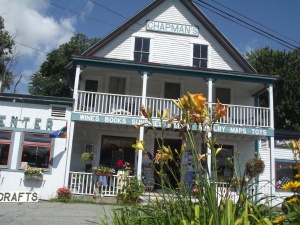
The roads in this quiet, northern end of the Upper Valley are beloved by bicyclists and about as good as it gets by car. North of Fairlee, the steep cliff face known as “the Palisades” gives way to open farmland along U.S. 5, with river views along the six miles to Bradford. A turn east at the light just south of the village leads to Farm-Way, Vermont’s answer to L.L. Bean, a family-run phenomenon spread over 16 acres, and a source of everything from shoes (25,000 pairs) to kayaks to syrup. Cross the bridge beyond to sleepy Piermont and New Hampshire Route 10; then head south through cornfields. Stop to buy aged Toma raw-milk cheese or ice cream at Robie Farm and, over the Orford line, rich cheddar, feta, buttermilk, or yogurt from the Devon cows at Bunten Farm, with its vintage barns and handsome 1835 brick house. One barn here houses Ariana’s, a small restaurant that’s literally “farm to table” and one of the best places to dine in the Upper Valley. South of the village, with its striking Federal homes spaced regally across a ridge above Route 10, you’ll find an 18th-century tavern housing Peyton Place, another outstanding restaurant.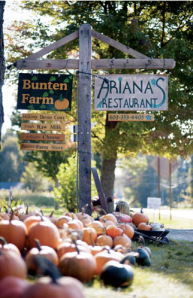
From here the road keeps its distance from the water, but you can angle off onto River Road, dipping down beneath a covered bridge and along past more Federal-era farmsteads on the way to Lyme. River Road continues on, but I usually turn inland to the green, framed by buildings all sheathed in white clapboard, from the handsome 1812 Congregational Church and four-story Lyme Inn to the general store, post office, and commercial buildings housing finds such as Stella’s Italian Kitchen & Market and Long River Studios, a shop and gallery selling art and artisanal wares. Below Lyme, New Hampshire Route 10 keeps its distance from the river along the 10 miles or so to Hanover.
Few college towns are as visitor-friendly as Hanover, New Hampshire, the geographical center and cultural hub of the Upper Valley. The Dartmouth Green doubles as the town common with a seasonally staffed information kiosk. Surrounding it are the historic and architecturally striking buildings of Dartmouth College, including the Hopkins Center for the Arts, a major performance venue; the Hood Museum of Art, with its outstanding collection; and the recently revamped Hanover Inn, a lodging and dining destination in its own right. South Main Street’s blocks are few but offer some remarkable places to eat and to linger. Ice-cream lovers will be happy to know that Forbes magazine recently rated Morano Gelato–the creation of Morgan Morano, who grew up in Hanover but perfected her skills working in Italian gelaterias–as home to the best gelato in America. (Bill and Pam Miles and John and Jenn Langus are the shop’s new owners; Morgan Morano is the business’s executive chef.)
Across the bridge in Norwich, Vermont, the Montshire Museum–blending both states in its name–is a science center fit for a city. With hands-on exhibits there’s plenty here to stimulate curious minds of all ages and to demystify a whole range of scientific phenomena, from the valley’s morning fogs to the physics of bubbles. Outdoors you’re invited to manipulate the flow of water downhill and to identify bird calls and insect sounds along trails through 110 riverside acres.
Norwich is a gracious Vermont town, with Dan & Whit’s, a famously old-style general store, at its center, along with the welcoming Norwich Inn, known for good food and a fine brewpub. It’s also home to King Arthur Flour and its flagship baker’s store, a cafe, and a baking-education center, drawing fans from across the country.
South from Norwich, you might want to hop I-91 (exit 13) for the 19 miles back down to Windsor. Known as “the Birthplace of Vermont,” Elijah West’s tavern in Windsor is the place where delegates from both sides of the Green Mountains gathered to draw up a constitution for the “free and independent state of Vermont”: a sovereign republic (until it joined the Union in 1791). This Old Constitution House is now open to the public on weekends.
Even when it’s closed, though, I stop here and walk the path leading to Lake Runnemede, a local destination for birders and another good picnic spot. I think it’s the pond in Thy Templed Hills by Maxfield Parrish, depicting a mountain resembling Ascutney, towering behind the water. The original of this painting hangs in the local People’s United Bank branch nearby, and, although bank ownership keeps changing, the painting is here forever, a gift to the tellers from Parrish for “keeping my account balanced.”
There are more obvious attractions in Windsor, as well: the American Precision Museum, a mellow brick armory where rifles were first made with interchangeable parts just in time for the Civil War, and, north of town, the ever-evolving 34-acre Artisans Park riverside campus, with visitor-friendly enterprises that include Simon Pearce Glass, Harpoon Brewery and its beer garden, Great River Outfitters, the Vermont Farmstead Cheese Factory, and the 14-acre Path of Life Garden.]
Squirreled away in a former freight shed down by Windsor’s Amtrak station, a wayside center offers visitor information about both sides of the river. It’s one of eight such centers along the 255 miles of river shared by New Hampshire and Vermont; it represents 30 years of concerted effort by a volunteer bistate commission, today almost forgotten, having achieved its goal: the 2005 formal recognition of theConnecticut River National Scenic Byway.
“Upper Valley” figures in the names of dozens of local organizations and businesses–and it’s where many residents will tell you they live, before mentioning which state. For me, it’s New England’s most distinctive bistate region, a place of constant discovery, even adventure.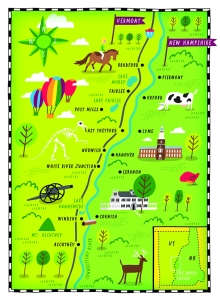
The future looks bright for Maine’s lighthouses
By Christina Tree
The Boston Globe, July 13, 2014
Lighthouses, like lobsters, can be found up and down the East Coast and beyond, but it’s Maine they symbolize.
More than 800 lighthouses still stand in the United States, and Michigan counts 120 to Maine’s 66, which include the Machias Seal Island Light, maintained by the Canadian Coast Guard. Maine can, however, claim to lead the country in innovative ways of preserving and maintaining these landmarks.
No longer simply photogenic icons, more than a dozen lighthouse stations now invite visitors to clamber up into their tower and/or to explore their keepers’ houses-turned-museums, welcome centers, or lodging.
“In order for lighthouses to survive, they have to speak to people in ways that move them,” observes Bob Trapani, director of the American Lighthouse Foundation. Founded 20 years ago to enable volunteers to restore and sustain their local lights, the group currently maintains 18 light stations, nine of them in Maine.
The US Coast Guard continues to service 56 Maine beacons but can no longer afford to preserve their supporting structures — the outmoded towers as well as keepers’ houses, outbuildings, and land. Lighthouses were decommissioned as early as the 1920s, and by the 1960s, all beacons had been automated; most are now solar-powered. By the 1980s, nine lighthouses had been sold off, several razed, and concern for the fate of the surviving lighthouses was widespread and intense.
According to Trapani, 42 Maine lighthouses have been transferred to nonprofits or sold since 2000. So it happens that each summer we see new adaptive uses and ways in which visitors can reach light stations and incidentally contribute to their repair and maintenance.
Recently, the American Lighthouse Foundation moved its Rockland headquarters from Main Street to Owl’s Head Light at the mouth of the harbor. Now the 1854 former keeper’s house triples as offices, gift shop, and interpretive center. The 1825 tower is open on a regular schedule, weather and volunteers permitting. Just 25 feet high, it’s an easy climb, and, given its site atop a high cliff, the view is a stunning 40-mile sweep from the Camden Hills, up the bay, and out across the islands.
“That blue hump that you can see peeping up beyond North Haven is Cadillac Mountain on Mount Desert [Island], and that’s Isle au Haut that you can just see beyond Vinalhaven,” points out volunteer Phelps Bristol.
Across the harbor, Rockland Harbor Breakwater Light is open on weekends, but here, weather can be a serious factor. Surrounded on three sides by water, the squat red brick engine room (now a gift shop), tower, and adjoining clapboard keeper’s house (under restoration) are sited at the end of an almost mile-long uneven granite breakwater, a 20-minute walk each way from shore. On a recent Saturday, the tower’s catwalk and deck were filled to capacity and, according to volunteer Eric Davis, it’s not unusual to log 600 visitors a day.
Pemaquid Point Light claims 100,000 visitors a year and may well be Maine’s most photographed icon. Since 2003, volunteers have kept the tower open daily all summer. The classic white 1824 tower looms high above smooth rocks that cascade down to the ocean, harboring tidal pools that delight kids of all ages. This was Maine’s first light to be automated, and its keeper’s house has long been a town-maintained fisherman’s museum.
Several other keeper’s houses are now small museums, open daily all summer. At Portland Head Light, the oldest and arguably the most handsome of all, exhibits tell, among other things, the history of lighthouses, beginning in Alexandria, Egypt, in 390 BC. At the Marshall Point Lighthouse Museum, you can leaf through daily logs kept by its resident keepers from 1874 to 1970, and the Monhegan Historical and Cultural Museum includes striking works painted on the island by the likes of George Bellows and Rockwell Kent.
The ultimate destination for today’s Maine lighthouse buffs is 2½ miles off the mouth of the Kennebec River, maintained by the Friends of Seguin Island Light Station. Here the highest light above Maine waters retains the state’s only still-active first-order Fresnel lens, which allows the light to be visible from up to 40 miles. Weather permitting, a resident caretaker greets visitors, helping them offload from a dingy (there is no dock) and guiding them up the steep path, into the museum and tower.
The Wood Island Lighthouse, marking the entrance to the Saco River, is far more visitor-friendly. Thanks to AFL and the local chapter of “friends” the 42-foot high tower and keepers house are under restoration, and frequent guided tours begin with a boat ride from Biddeford Pool.
At Burnt Island Lighthouse, built in 1821, visitors are greeted by docents in 1950s dress portraying the island’s last lighthouse keeper and his family, guiding them around their ’50s furnished home and up into the light. Owned by Maine’s Department of Marine Resources, the island is accessed by excursion boat tours from Boothbay Harbor.
Another Boothbay area island light station is the newest to offer lodging. The Inn at the Cuckolds Lighthouse on rocky ledges off Southport Island, opens as a luxurious, two-suite bed-and-breakfast in August. Here the keeper’s house had already been razed, and the distinctive lighthouse itself was threatened in 2004 when a local couple applied to acquire it, ultimately rallying local support to rebuild.
The privately owned keeper’s house on Isle au Haut, accessible by mail boat from Stonington, was Maine’s first light house station-turned-inn. Recently reopened, it offers four guest rooms plus a “cozy” former oil house and a cottage.
Surprisingly little known, Whitehead Light, with its beautifully restored keeper’s house, welcomes guests in seven guest rooms (private baths) and ample common space. Sited on a sizable island off Spruce Head, it’s owned by the century-old Pine Island (boys’) Camp. Check out the openings for multiday summer workshops and September rental.
Cutler is also a departure point for puffin-watching tours to Machias Seal Island, a bird sanctuary astride the boundary between the Gulf of Maine and the Bay of Fundy. Nearby Quoddy Head State Park, known for its clifftop hiking trails, is home to candy-striped West Quoddy Head Light, marking the easternmost point in the United States. The Keepers House serves as a welcome center for the Lubec area.
So who needs to step inside a light or keeper’s house? Perhaps the much-photographed Nubble Light near the western extreme of Maine’s 4,500-mile coastline is all the more appealing because it sits mysteriously aloof, just across a narrow channel from York’s Sohier Park.
Increasingly, however, visitors are discovering lighthouses as live links to beautiful corners of Maine’s coast and islands and a time in which everything and everyone moved by water.
On Sept. 13, Maine Lighthouse Day, 17 towers hold open houses.
Lost adventurous lighthouse lodging: a self-contained, three-story, round channel marker at the outer end of the Fox Isles Thoroughfare. Privately owned, its ongoing restoration is financed largely through “keepers experiences.” Guest “keepers” are met at the nearby North Haven ferry landing and eased up the ladders. Bring your own groceries.
The most economical lighthouse stay is in the nicely restored keeper’s house at Little River Lighthouse, set on a small, trail-webbed island off the village of Cutler. Rates (from $150) include transportation, but it’s bring your own linens, towels, sleeping bag, food, beverages, and bottled water.
Cutler is also a departure point for puffin-watching tours to Machias Seal Island, a bird sanctuary astride the boundary between the Gulf of Maine and the Bay of Fundy. Nearby Quoddy Head State Park, known for its clifftop hiking trails, is home to candy-striped West Quoddy Head Light, marking the easternmost point in the United States. The Keepers House serves as a welcome center for the Lubec area.
So who needs to step inside a light or keeper’s house? Perhaps the much-photographed Nubble Light near the western extreme of Maine’s 4,500-mile coastline is all the more appealing because it sits mysteriously aloof, just across a narrow channel from York’s Sohier Park.
Increasingly, however, visitors are discovering lighthouses as live links to beautiful corners of Maine’s coast and islands and a time in which everything and everyone moved by water. On Sept. 13, Maine Lighthouse Day, 17 towers hold open houses.
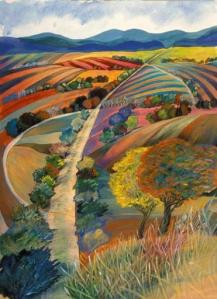 BOSTON GLOBE, 9/8/13
BOSTON GLOBE, 9/8/13
On Tour in Vermont, a Countryside Changing Color
By Christina Tree
Vermont North by Hand Studio are timed to coincide with the brightest fall colors along the upper reaches of the Connecticut River and in the rolling hills just to the west. Scheduled for Oct. 5-6, the open studios are a chance to view fine art and crafts, meet the creators, and travel beautiful back roads between sites.
According to potter Bruce Murray, this event began a decade ago with a cluster of craftspeople in the hill towns that are still at the heart of the tour. Murray’s studio, an 18th-century timber-frame barn, is on a byway heading from the river (and Interstate 91) into the hills. His work, as that of most participants, is sold widely but only in his studio do you see its scope, from butter dishes to wall pieces.
“In a gallery you see a piece of work alone,” says photographer Linda Bryan of Newbury. “It’s much more interesting to see it along with the person who creates it and to see how they work.”
It’s also fascinating to see the ways in which artists depict their surroundings. In her home studio in Newbury, Judith Lerner paints skillful, fanciful, and deeply colored renditions of the neighboring Connecticut River oxbow in its wide valley, backed by high peaks to the west. (see painting above)
The 21 tour participants include a varied mix of craftspeople. Susan Bradford’s studio, housed in a brick manse on North Main Street in Bradford, is a trove of colored sheepskin coats and hats in original designs, which sell for much more in top Boston crafts galleries.
“In winter you should be colorful as well as warm,” advises Kathryn Price, who weaves hand-dyed, hand-woven scarves and shawls in striking colors and designs. Price is one of several craftspeople who will be showcasing work at the Corinth Town Hall, also the tour’s main food stop. A gallery, two woodworkers, a stained-glass artist, and collage artist also welcome visitors in Corinth.
Signs and arrows will supplement a printed map-guide. Seewww.vermontnorthby hand.org.
Boston Globe 9/8/2013 Open Acre Ranch
WEST FAIRLEE, Vt. — This state’s hundreds of miles of dirt roads and grassy tracks were designed for horses. But these days exploring them on horseback isn’t easy. Open Acre Ranch guides riders up into the hills and through its 400-acre spread of woods and meadow.
Owner Rebecca Guillette has been riding since she was 6, winning ribbons initially in English-style riding competitions, eventually switching to Western saddles and rodeos because, “it’s less stuffy, more fun, and more kid-friendly.”
Guillette loves kids. She has three of her own and caters to nearby summer camps on Fairlee and Morey lakes. With a total of 40 horses — Paints, Appaloosas, and Quarter Horses — and no shortage of guides, there are usually enough rides available to satisfy differing demands. Open Acre welcomes beginners and experts alike but never, Guillette says, does she knowingly mix riders of varying abilities in the same group.
Rain was forecast on the chilly morning I found my way the few miles from Interstate 91 to Lake Fairlee, then up a farm road to the small “Open Acre Ranch” sign. The place is unpretentious and homey, and the horses in surrounding paddocks looked promising. I found Guillette in her small office, which is crammed with ribbons and trophies. The open-sided stable is up a path beyond an open riding ring.
In short order we trotted out down the road, by barns and fields, then off onto a trail leading up into woods. Metro, my sturdy mount, broke smoothly into a canter, first up a forest path and then into a high meadow. I kept one hand gratefully on the saddle horn as he speeded up. Finally we stopped on a knoll with views across the low Vermont hills to the foothills of the White Mountains in New Hampshire.
Guillette leases her 400 acres, a former cattle farm that abuts the town forest, all part of uplands just west of the Connecticut River. A popular ride brings you to Small Top Mountain with 360-degree views. Inquire about overnight rides, multiday treks in foliage season, and overnight lodging in the apartment above the barn.
OPEN ACRE RANCH Trail rides are $40 per person for one hour, $60 for two hours, $100 for a four-hour ride that includes a picnic. Private lessons $45, group lessons $35. 1478Blood Brook Road, Fairlee, Vt. 802-333-9196, www.openacreranch.com
YANKEE MAGAZINE – NEW ENGLAND’S GREAT LAKES
Cover story; July/August 2013
Moosehead Lake, Maine | Great Big Lake
In places, Moosehead is as wide as most lakes are long, but our family is drawn to the narrow passage at its midpoint. A dirt road forks off through the woods to The Birches’ lakeside lodge and cabins at Rockwood, a village of camps and marinas at the mouth of the Moose River. Forget unpacking. It’s out the porch and into the water, and later, down the path to the marina, where kayaks are stacked. We paddle slowly, keeping close to the shore, every stroke connecting with this place, this lake.
Next morning we sip coffee on the rocks below our cabin. Mount Kineo’s cliff face, thrusting up 700 feet, waits less than a mile across the water. Sacred to the Wabanaki, the mountain is composed of a rare green flint-like rhyolite, the source of numberless arrowheads, some dating back thousands of years. One collector, Henry David Thoreau, climbed to the top of the cliff in 1857, declaring it “a dangerous place to try the steadiness of your nerves.”
Our nerves steady, we reach Kineo by shuttle from nearby Rockwood Landing. The Indian Trail is still a scramble along the edge of the cliff, but there are frequent turnouts, picnic perches above the flat apron of land below. For nearly a century, Maine’s largest, most luxurious resort stood here, survived now only by a nine-hole golf course, a ghostly annex, and a row of cottages.
It’s midafternoon when we reach the summit. Maine’s largest lake stretches 20 island-dotted miles away to the southeast and the same to the north. The Moose River and its chain of ponds angle off to the west; ragged bays wander between mountains to the east. On all sides, water is rimmed by an ocean of green forest, stretching to waves of genuinely blue mountains.
In a real way Moosehead Lake is more remote today than in the era when Mount Kineo House guests could step aboard the Maine Central in Boston and step off at Rockwood Landing. Greenville, 20 miles south, on the eastern shore near the lake’s toe, is one of only a few communities along its 400-mile shoreline. Despite the ever-thickening web of private roads, this neck of the North Woods remains untamed, dotted with sporting camps and ponds best reached by floatplane. “I like to fly low and slow,” John Willard tells us as we swoop down over Lucky Pond to view a moose. The Piper PA-12 climbs more than 3,000 feet for a close-up view of the well-named Ladder Trail on Big Spencer. We cruise east toward Mount Katahdin before banking back over Moosehead.
“We saw a bear shuffling along down in the woods below that plane one year,” Valerie Long tells us on the final evening of our too-short stay. The Longs, our neighbors two cabins down, have invited us to join their fire circle. Rhode Islanders the rest of the year, they’ve been coming here for all but one of the past 20 summers, and we compare notes—about flights, whitewater rafting, moose watching, and hiking, and, best yet, once you’ve got the kinks out, about doing nothing at all—with all day to do it.
On our final morning the water is still, every pebble visible in the shallows. I grab my pad and paints and settle down on the rocks. Hours later a family of mallards drifts by. Months later that picture still evokes the sparkle of light off the water that I never caught on paper.
Lake Willoughby, Vermont | Great Views Lake
Stunningly beautiful Willoughby is wedged between Mounts Pisgah and Hor, each more than 2,500 feet high. A century ago this fjord-like lake, more than 300 feet deep in places, was home to competing hotels, while excursion steamboats plied the waters. Today this is a quiet, even haunting, place cloaked in the 7,000-acre Willoughby State Forest in Vermont’s Northeast Kingdom. In midsummer, North Beach, despite its clear water and spectacular view, is almost empty, except for a flock of seagulls circling overhead. South Beach, nearly five miles down, is smaller but more popular thanks to White Caps Campground, a source of camping fare, breakfast, lunch, rental canoes, kayaks, and Wicked Willy T-shirts. (“Willy” is Willoughby’s monster.)
“There are times when you paddle out and it’s perfectly calm and then the wind will pick up and you better head for shore,” Linda Maden says. Linda and her husband live on Cape Cod, but for more than 20 years they’ve called the RV they keep at White Caps their summerlong home. “It’s so beautiful and peaceful here,” Linda explains. “No jet skis. Some outboard motorboats, but mostly kayaks and sailboats.” Once or twice a summer they climb up to Pulpit Rock on Mount Pisgah, and every day she can, Linda paddles on the lake. Near sunset they stroll down to the beach to watch the peregrine falcons soar off the cliffs.
On the first morning when the thermometer on the shady north side of our house inches up into the 80s, we grab beach bags and head up I-93 to Newfound Lake.
Considerably smaller than Winnipesaukee to the east, but about the same size as Sunapee to the southwest, Newfound is some 7 miles long and 2½ miles wide. Close by, Wellington State Park is tucked just off West Shore Road. It’s late morning when we lug our gear past the old-style swing sets and onto the long curve of firm sand, but there are still some vacant picnic tables under the white pines. In the water there’s the usual roped-off shallow area for kids and, less usual, marked outer lanes for serious swimmers—plenty of room for everyone in water that’s so clear you can see small fish skimming along the sandy bottom.
We settle back into the shade and feast on the view of cool blue that seems to extend all the way to Tenney Mountain in the distance. A few swims later, we walk from the beach into the woods along the Peninsula Trail, which brings us back to the beach and another swim.
It’s late afternoon by the time we follow West Shore Road into Hebron. The grill at the Hebron General Store has been turned off for the day, but there’s still ice cream. A short drive west brings us to Sculptured Rocks Natural Area in Groton, a series of natural pools and shoots down in a canyon of the Cockermouth River. It’s too late to jump in ourselves, but from the footbridge we watch the fun below.
The Newfound Audubon Center on North Shore Road is about to close by the time we stop by. Next time we’ll come early enough to take out a kayak. The way home is down along the eastern shore of the lake, with views of the sun setting behind Mount Cardigan to the west.
Tags: lakes
Damariscotta Lake, Maine | Great Coastal Lake
by Christina Tree in Jul 2013
Damariscotta Lake is the glacier’s gift to those of us who love to look at the ocean or sail it but shiver at the thought of jumping in. Sited on Maine’s busy Midcoast, Damariscotta is a big, pristine lake with summer water temps that top 70 degrees.
Fourteen miles stem to stern, Damariscotta Lake seems longer, changing character as it wanders north through three towns, its largely wooded shoreline patched with rolling farmland. Great Bay, the north basin, is wide and deep, good for catching smallmouth bass and trout, while South Arm is skinny and shallow, great for swimming.
Locals gather on the grassy bank and ledges of Ice House Park in Damariscotta Mills, not far off coastal Route 1. A sign reads No Foul Language as well as No Alcoholic Beverages, but nothing prohibits kids from jumping off the bridge.
The public boat access is a few miles farther up on Bunker Hill Road (Route 213), and there are spruce-topped islands to paddle out to. Although there’s no boat ramp at the state park, you can launch a kayak or canoe from there.
Damariscotta Lake State Park, the major public swimming access, is in Jefferson, nine miles north of Route 1. The sand beach there is backed by picnic tables and grills under pines, and the shallow water is great for short legs. There are changing facilities and a playground, but no snack bar or camping. For sustenance there’s the Jefferson Scoop up the road and the general store beyond.
At Damariscotta Lake Farm (at the junction of Routes 126 & 32), twin rows of private cottages file down to the dockside building housing the Damariscotta Lake Watershed Association, a clue to this lake’s pristine look and water quality. Founded in 1966, the association, with nearly 500 member families, is fiercely dedicated to maintaining the lake’s ecosystem. Its office is a source of local maps, books, and a summer sailing program for kids.
Belgrade Lakes, Maine | Great Family-Nesting Lakes
The Belgrade Lakes are a cluster of seven bodies of water north of Augusta. There’s no Belgrade Lake per se, but Belgrade Lakes Village fills a narrow land strip between Great Pond and Long Pond. At the center of the village is Day’s Store, the region’s source of gas and staples, plus tackle, freshly baked goods, wine, pizza, and hand-dipped ice cream. In summer films are screened on the back of the store, visible from boats as well as lawn chairs. The line-up usually includes On Golden Pond. Never mind that the 1981 movie starring an elderly Katharine Hepburn and Henry Fonda was filmed in New Hampshire; it was in his cottage on Great Pond that Ernest Thompson wrote the play. It’s set in a classic summer cottage on a wooded lake, where mail is delivered to their dock. Today, Norm Shaw, the lake’s current mailman, stops at that dock on his daily rounds.
Diane Oliver, the third generation of her family to orchestrate Day’s Store’s many services, tells me that all seven of these lakes are still like Golden Pond. Summer after summer the same families come back to do the same things, mainly swim and fish. Our wake-up call at our cabin at Bear Spring Camps on Great Pond is the putt-putt of my neighbor’s outboard motor, a pre-breakfast summer fishing ritual for a father and son. It once netted them a 23-inch pike.
We take a swim and then hike up past the basketball and tennis courts, on up the hill to breakfast in the big, old-fashioned dining room of a sprawling, gabled farmhouse. After breakfast we hit the wicker rockers on the flowery porch and visit with other guests. So goes the day: paddling, swimming, eating. The sunset is silken, and we sit listening to the call of loons. We stoke the fire and watch the stars appear one by one, and when there are too many to count, we lie on our backs on the dock and find Orion’s Belt and the Big Dipper.
The Belgrade Lakes offer plenty of vacation rentals, but what’s unusual here is New England’s largest concentration of old-style commercial fishing “camps.” This vanishing breed of no-frills lodging offers the ultimate summer luxuries: water at your door, a boat at your dock, sit-down meals, and plenty of other kids for your kids to play with. Peg Churchill is the fourth generation of her family to run Bear Spring Camps, the affordable, old-style summer escape that we discovered when our sons were small, one that probably hasn’t changed much since E. B. White summered here as a kid.
Regulars like to say that the Belgrade Lakes are frozen in the 1950s. Not quite true. There’s the Belgrade Lakes Community Center with its indoor pool as well as a beach, and the Belgrade Golf Club, with an 18-hole course and a spiffy restaurant. On the other hand, by North Pond there’s still the Sunbeam Roller Rink in Smithfield, which has been around for more than 50 years.
Newfound Lake, New Hampshire | Great Daytrip Lake
On the first morning when the thermometer on the shady north side of our house inches up into the 80s, we grab beach bags and head up I-93 to Newfound Lake.
Considerably smaller than Winnipesaukee to the east, but about the same size as Sunapee to the southwest, Newfound is some 7 miles long and 2½ miles wide. Close by, Wellington State Park is tucked just off West Shore Road. It’s late morning when we lug our gear past the old-style swing sets and onto the long curve of firm sand, but there are still some vacant picnic tables under the white pines. In the water there’s the usual roped-off shallow area for kids and, less usual, marked outer lanes for serious swimmers—plenty of room for everyone in water that’s so clear you can see small fish skimming along the sandy bottom.
We settle back into the shade and feast on the view of cool blue that seems to extend all the way to Tenney Mountain in the distance. A few swims later, we walk from the beach into the woods along the Peninsula Trail, which brings us back to the beach and another swim.
It’s late afternoon by the time we follow West Shore Road into Hebron. The grill at the Hebron General Store has been turned off for the day, but there’s still ice cream. A short drive west brings us to Sculptured Rocks Natural Area in Groton, a series of natural pools and shoots down in a canyon of the Cockermouth River. It’s too late to jump in ourselves, but from the footbridge we watch the fun below.
The Newfound Audubon Center on North Shore Road is about to close by the time we stop by. Next time we’ll come early enough to take out a kayak. The way home is down along the eastern shore of the lake, with views of the sun setting behind Mount Cardigan to the west.
YANKEE MAGAZINE
November/December 2011
New England’s Best Historic Inns
Escape to a distant time at one of New England’s historic inns, where a 1700s ambience is preserved with style and comfort.
by Christina Tree
These are the moody weeks between foliage color and holiday glitz, a lull best captured with a night or two away. An old inn, one with the patina and the stories that come with age, seems particularly suited to this reflective time. We traveled many hundreds of miles in our search for the best of New England’s oldest inns and B&Bs–those that still evoke the 18th century but are cushioned in contemporary comforts. The following historic and restful places emerged as our favorites.
No. 1
THE OLD INN ON THE GREEN
New Marlborough, Massachusetts
Late one afternoon we arrived at The Old Inn on the Green in New Marlborough, Massachusetts. This classic 1760s stagecoach inn stands in the southern Berkshires on the far side of a green along Route 57, now a quiet byway but once a bustling road heading west toward New York State. It’s a long, low-slung building faced with columned first- and second-story porches; it’s flanked by a gold-domed meetinghouse and a sprinkling of early homes in matching white clapboard.
We were greeted by delicious aromas and a cheerful staffer who ushered us out the door and across the green to a ground-floor room, furnished with antiques, in the nearby Thayer House, a vintage 1820s home. Would we like our hearth lit? Of course.
We sank into the wing chairs on either side of the shallow Rumford fireplace. The logs blazed, then settled into shifting patterns. Finally we stirred as far as the sitting room across the hall and checked out our bathroom with its full-headed shower and a separate Jacuzzi; also robes and bath salts. Ah yes …
By 6:30, one of the inn’s three dining rooms had already filled; patrons were taking advantage of acclaimed chef/owner Peter Platt’s reasonably priced midweek menu. The low-ceilinged dining rooms were lit by candles that blazed in iron chandeliers as well as on tables. Roasted-red-pepper soup came studded with tempura shrimp and a tender veal scaloppine, with seasonal veggies polenta. A series of amuse-bouches included risotto with onions and mushrooms and a lobster pate.
“It’s like unpacking a Christmas stocking,” my companion observed. “You have no idea what will come next, even with what’s on the menu.”
Next morning, after a breakfast of French-press coffee, juice, and the flakiest, most buttery of fresh croissants, we looked into the five light-filled upstairs rooms, all successfully preserving a 1700s feel–with style and comfort.
No. 2
THE FRANCIS MALBONE HOUSE
Newport, Rhode Island
What you don’t expect to find in 1760s New England is an inn that looks as though it could be in London. The Francis Malbone House, in Newport, Rhode Island, is a three-story brick Georgian mansion, said to be designed by famed Colonial architect Peter Harrison. Colonel Malbone was a shipping merchant during Newport’s heyday of seafaring glory, an era in which its gentry wore powdered wigs and high-heeled, gold-buckled shoes. During the Revolution, the British occupied Newport, and, so the story goes, an English officer fell in love with Colonel Malbone’s daughter Peggy, risking capture to visit her. After the war they married and returned to England. Newport, however, never regained its prominence, luckily for the preservation of its old port area. Meticulously restored in the 1960s, the original mansion has acquired additions and an adjacent property in the years since, and is now a 20-room inn.
Entry is through this addition, and from there guests step back in time, into the broad central hall with its high dividing arch and four flanking parlors, each with intricately detailed original paneling. In one of these rooms, said to be the former kitchen, a table is piled high with an extravagant afternoon “tea,” substantial enough to preclude any need for dinner.
We settled into a third-floor room but were lured from our crackling hearth by the bright lights below us, along Thames Street and the neighboring wharves–and into a Newport that turns December into a monthlong celebration filled with glimmer and greenery (details at christmasinnewport.org).
No. 3
THE DORSET INN
Dorset, Vermont
Set above marble steps, the three-story, pillared Dorset Inn anchors the village green. Opened in 1796, this is Vermont’s oldest continuously operating inn. The low-ceilinged lobby and parlors have slightly slanted, wide-planked floors, and there’s a cheery tavern and a graceful, deep-rose-colored dining room. The 25 recently renovated guestrooms wander off in several directions.
In 1785, the country’s first commercial marble quarry opened in Dorset, source of its marble sidewalks, conferring on the village a touch of class that’s also evident in its handsome homes. The inn grew when Dorset became a summer destination, and summer and fall rates are still higher than at other times of the year. At holiday time, guests can find shopping bargains at the designer outlets in neighboring Manchester, or ski at nearby Stratton and Bromley.
We visited on a gloomy midweek day, grateful for the gas fire in our rear-wing suite; also for the tea, coffee, and cookies by the parlor hearth. Past guests will be pleased to know that the inn still serves its iconic turkey croquettes and that its beloved waitress of 25 years, Nuni, still presides in the Tavern. (Ask her about the ghost.)
No. 4
THE INN AT WEATHERSFIELD
Perkinsville, Vermont
Built as a private house in the 1790s, The Inn at Weathersfield, in Perkinsville, Vermont, is a rambling, luxuriously relaxing place to stay and one of the best places to dine in the Green Mountain State.
Chef Jason Tostrup is recognized as one of Vermont’s foremost locally grounded chefs, no small feat in a state where the “locavore” esthetic enjoys near-religious status. He begins his workday by visiting farms, collecting eggs and produce. He enthuses about the quality of locally raised meat and waxes lyrical about the variety of farmstead cheeses available on his circuit–which guests are invited to tour themselves, using innkeepers Jane and David Sandelman’s map and guide to local farms.
Today the house is a far cry from the boarded-up property the Sandelmans bought from the bank a decade ago. From original rooms in the front of the house to suites squirreled away up multiple staircases and tucked under the eaves, the dozen guestrooms are furnished with comfortable antiques and fitted with every conceivable amenity, many with gas fireplaces and Jacuzzis.
The inn’s Restaurant Verterra is warmed by a blazing fire in a fieldstone hearth. Patrons may choose from several menus, but we went for Tostrup’s unwritten specials. We lost count of the number of small, artistically arranged plates we admired and consumed, savoring every crumb. Again, it was like unpacking a Christmas stocking. Who knew that crispy veal belly could taste so good?
No. 5
THE HANCOCK INN
Hancock, New Hampshire
The Hancock Inn opened in 1789 at the heart of a classically New England village in New Hampshire’s Monadnock region. It’s the state’s oldest continuously operating inn and remains an authentically historic, friendly, and comfortable place to stay.
Innkeepers Jarvis and Marcia Coffin and Potter the golden retriever greet guests at the door. It’s easy to visualize past patrons gathering in the tavern around the big old bar and fireplace. The 1860s ledger here records hundreds of guests, including Franklin Pierce, recently retired from the U.S. presidency at the time. The inn is still known for good food, especially its signature Shaker cranberry pot roast.
The 14 guestrooms are all attractively furnished, and many have gas or electric hearths. One guestroom wall features a mural of trees and hills created in the 1820s by itinerant painter Rufus Porter. In another guestroom, stencils replicate patterns by famed 19th-century artist Moses Eaton, a Hancock resident. Eaton himself decorated several rooms, but the only sample of his original work that has survived here is in a closet.
When you venture outside the inn, the nearby Harris Center offers hiking and cross-country skiing; there’s also skating on Norway Pond, just a quick stroll away, and downhill skiing at Crotched Mountain in the neighboring town of Bennington.
No. 6
THE INN AT LOWER FARM
Stonington, Connecticut
“All the stones from the White Mountains were dropped right here in Stonington,” Mary Wilska says, pointing to small boulders piled into walls dividing the fields around her Inn at Lower Farm. She tells us that this coastal corner of Connecticut once marked the southern reach of New England’s glacier. Inside her 1740s post-and-beam farmhouse, a mammoth stone lintel above the kitchen hearth seems further proof.
Thanks to a massive central chimney, three guestrooms retain working Rumford fireplaces, also an uncluttered grace. All are bright and spacious, with white, stencil-trimmed walls, pleasingly painted 18th-century woodwork, comfortable seating, and good-size bathrooms.
A decade ago this was known as “Falling-Down Farm,” and it lacked electricity, but Mary and Jon Wilska bought it the day they saw it. Their restoration included adding five baths and reverently restoring paneling, wide-planked flooring, and variously shaped posts and beams. To the three original guestrooms, they added a fourth (with jetted tub) and also created private quarters for themselves. For guests, they reserved the comfortable front parlor with its working hearth, now fitted with wing chairs and a wall of books. Guests awaken to a candlelight breakfast served in the keeping room.
Though there’s the lure of nearby casinos or Mystic Seaport, many guests stray only as far as the neighboring conservation land. “What they want is to get away from busyness,” Mary says. “They like the quietness here.”
No. 7
THE CANDLEBERRY INN ON CAPE COD
Brewster, Massachusetts
Step into the dining room at The Candleberry Inn in Brewster, Massachusetts, and you’re in a 1790s two-story “sea farm” with wide-board pine floors and “bubble and wave” glass windows. Early in the 19th century, front rooms and a “square-rigger” facade were added.
B&B host Charlotte Fyfe is a fifth-generation Cape Codder and a locally acclaimed baker, whose skills are displayed in the shortbreads and scones set out for afternoon tea. A quarterboard from her great-great-grandfather’s schooner, the Jessie Matheson, hangs in the living room above the glowing woodstove; the captain’s sextant is here, too, along with photos of his Provincetown-based fleet.
Charlotte’s husband, Stuart Fyfe, a retired high-school teacher and coach, is an avid carpenter with a lot of respect for the original woodwork throughout the house. Five of the inn’s eight inviting guestrooms are open in winter, four with fireplaces. Like most old Brewster homes, it’s had its share of paying guests. Author Horatio Alger came in 1864 and stayed for two years. A centerpiece of the village, the Candleberry is a favorite stop for visitors during Brewster’s holiday celebration (December 2-4 this year; brewsterfortheholidays.org). For many guests, the off-season appeal here is walking the vast sand flats that appear with every low tide.
No. 8
THE INN AT VALLEY FARMS
Walpole, New Hampshire
Little is known about the early history of The Inn at Valley Farms in Walpole, New Hampshire. What counts is the way this 1774 dual-chimney Colonial looks, inside and out. Jacqueline Caserta grew up down the road and bought the 105-acre property when it was threatened by development. She’s furnished its handsome formal parlor, library, and dining rooms with appropriate antiques and created three comfortable upstairs guestrooms, including a two-bedroom suite. Families may also choose between two neighboring cottages, each with three bedrooms, a kitchen, and a living room.
Guests are invited to walk or snowshoe up the hill behind the inn–past the cows, cashmere goats, pigs, and four-story red barn–up to the hilltop meadow, with its view down the valley. Breakfast features eggs from the farm’s chickens.
Thanksgiving weekend is a big event here, with open studios on both sides of the Connecticut River, sponsored by the Walpole Artisans Cooperative (details at walpoleartisans.org/tour.html). The village also offers destination dining at L. A. Burdick’s bistro and chocolate shop.
No. 9
THREE MOUNTAIN INN
Jamaica, Vermont
Standing as it does on Route 30 in the middle of Jamaica, Vermont, it’s likely that the Three Mountain Inn has taken in travelers since the 1790s. Certainly the inn’s Old Keeping Room looks the part. There’s a large continuously lit hearth, deeply hued 22-inch wide-pine paneling, and a cozy corner bar. There’s also pottery, multicolored glass, and rustic furniture, all made by craftspeople working within steps of the inn. Many of the striking paintings throughout the common rooms are from the Elaine Beckwith Gallery on the northern edge of the village.
Two small, elegant dining rooms with working fireplaces are the setting for innkeeper Ed Dorta-Duque’s four-course prix-fixe dinners and sumptuous breakfasts. Guestrooms, many with gas fireplaces, are divided between the original inn and neighboring Robinson House. In the garden there’s also luxurious Sage Cottage.
From the highway, Jamaica flies by in an instant–yet it lingers as you browse its shops or follow the road from the back door down across the West River to the hiking and cross-country ski trails in Jamaica State Park. On Thanksgiving weekend, nearby Putney hosts one of New England’s standout open-studio tours (details at putneycrafts.com), and in December ski trails open up on Stratton Mountain, just 10 miles distant.
No. 10
HENRY FARM INN
Chester, Vermont
There’s an out-in-the-country feel to the Henry Farm Inn in Chester, Vermont. Now a B&B, it was built in the late 1700s as a stagecoach stop on the Green Mountain Turnpike, today a quiet road on the edge of town. Inside there’s a warm welcome from hosts Patricia and Paul Dexter and a fire in the guest parlor.
This is a central-hall Federal home with a spacious feel throughout. It retains its wide-pine floorboards and original paneling. The nine sunny guestrooms include two on the first floor plus second-floor suites with kitchen/sitting rooms, good for families. All rooms are furnished tastefully with historic wallpapers and comfortable antiques. What you notice are the quilts and the views. After a full breakfast in the fireplaced dining room, guests may work it off skiing or snowshoeing out the back door and up around through the woods and meadow. And for old-time holiday revelry, Chester’s “Overture to Christmas” (December 10 this year) can’t be beat (details at yourplaceinvermont.com).
See a slide show and a list of additional top historic New England inns.
Historic Inn Resources
Rates represent late fall/early winter, per night double occupancy, unless otherwide noted. Be sure to call ahead or visit venue Web sites to check seasonal schedules, available travel packages, or other special pricing.
THE OLD INN ON THE GREEN
134 Hartsville-New Marlborough Road, New Marlborough, MA
From $99 per person per night, including full breakfast and dinner. Innkeepers: Peter Platt & Meredith Kennard.
413-229-7924; oldinn.com
THE FRANCIS MALBONE HOUSE
392 Thames St., Newport, RI
From $99, including full breakfast. Innkeeper: Will Dewey.
800-846-0392, 401-846-0392; malbone.com
THE INN AT WEATHERSFIELD
1342 Route 106, Perkinsville, VT
From $159, including full breakfast. Innkeepers: Jane & David Sandelman.
802-263-9217; weathersfieldinn.com
THE DORSET INN
Jct. Church St. & Route 30, Dorset, VT
From $165, including full breakfast. Innkeeper: Lauren Bryant.
802-867-5500; dorsetinn.com
THE HANCOCK INN
33 Main St., Hancock, NH
From $105, including full breakfast. Innkeepers: Jarvis & Marcia Coffin.
800-525-1789, 603-525-3318; hancockinn.com
THE INN AT LOWER FARM BED & BREAKFAST
119 Mystic Road, North Stonington, CT
From $95, including full breakfast. Innkeepers: Jon & Mary Wilska.
866-535-9075, 860-535-9075; lowerfarm.com
THE CANDLEBERRY INN ON CAPE COD
1882 Main St., Brewster, MA
From $115, including full breakfast. Innkeepers: Charlotte & Stuart Fyfe.
508-896-3300; candleberryinn.com
THE INN AT VALLEY FARMS
633 Wentworth Road, Walpole, NH
From $175, including full breakfast. Innkeeper: Jacqueline Caserta.
877-327-2855, 603-756-2855; innatvalleyfarms.com
THREE MOUNTAIN INN
3732 Main St. (Route 30), Jamaica, VT
From $195, including full breakfast; prix-fixe dinner $55. Innkeepers: Ed & Jennifer Dorta-Duque.
800-532-9399, 802-874-4140; threemountaininn.com/
HENRY FARM INN
2206 Green Mountain Turnpike, Chester, VT
From $115, including full breakfast. Innkeepers: Patricia & Paul Dexter.
802-875-2674; henryfarminn.com
Best Historic Inn Criteria
How did we choose our “bests” from all of the notable 18th-century lodgings in New England? To start with, we used the following criteria:
1. Age. Had to be standing before 1799.
2. Comfort. We appreciate a bit of luxury with our history.
3. Historic ambience. The details and renovations still evoke the 18th century.
4. Food. The better the meals, the higher the rating (but we precluded inns that are primarily restaurants). The B&Bs we chose are handy to local dining; you can’t live on breakfast alone.
5. Setting. What you see around you is important.
6. Things to do. Seasonal celebrations, outdoor pursuits, and shopping, including open studios and craft fairs, are all considerations at this time of year.
7. Value. After foliage comes the low season, right up until Christmas week. We looked for substantial savings on rooms and meals and packages with nearby ski resorts and restaurants.
8. Hearths. Real wood fires are rare and fabulous, but gas and electric also count.
9. A storied past. We love hearing tales of an inn’s history and its place in local lore.
10. A nice library. Books, magazines, and DVDs all help guests downshift and stay put.
To see how each of our 10 inns stacked up in individual categories, check out our ratings chart at: YankeeMagazine.com/more
Please Note: This article was accurate at the time of publication. When planning a trip, please confirm details by directly contacting any company or establishment you intend to visit.
YankeeMagazine.com information comes from the editors of Yankee Publishing, with the exception of directory information, which comes from advertisers. No advertising considerations are made when selecting and recommending any establishment, except where noted. Rates and event dates are subject to change. We strongly advise that you call first to confirm before setting out on your trip.
Advertise | Privacy Policy | Contact Us | Subscribe | Subscriber Services | Customer Service | Press Contact| Site Search | Employment | RSS Feeds
Interactive services developed and maintained by Reinvented Inc.
©2013, Yankee Publishing Inc. All Rights Reserved.
Yankee Publishing Inc., P.O. Box 520, Dublin, NH 03444, (603) 563-8111
features

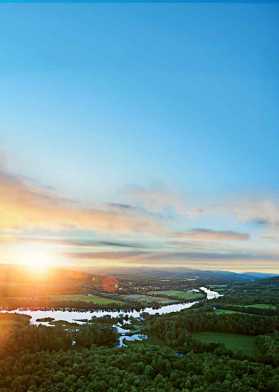
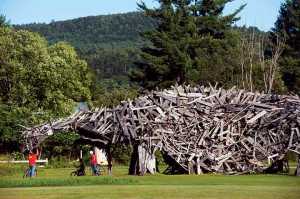
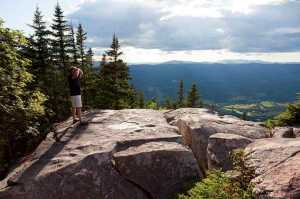
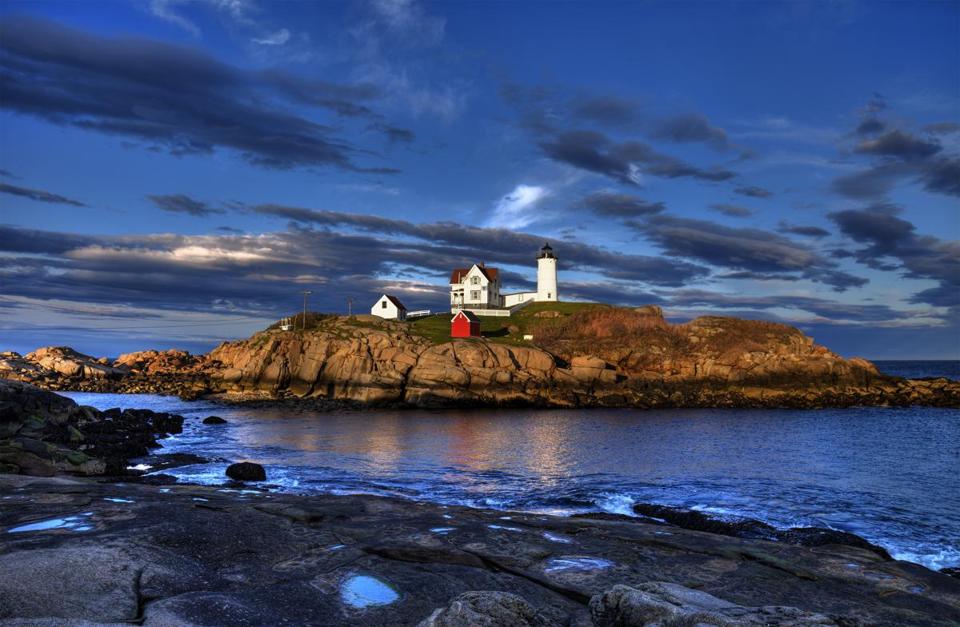
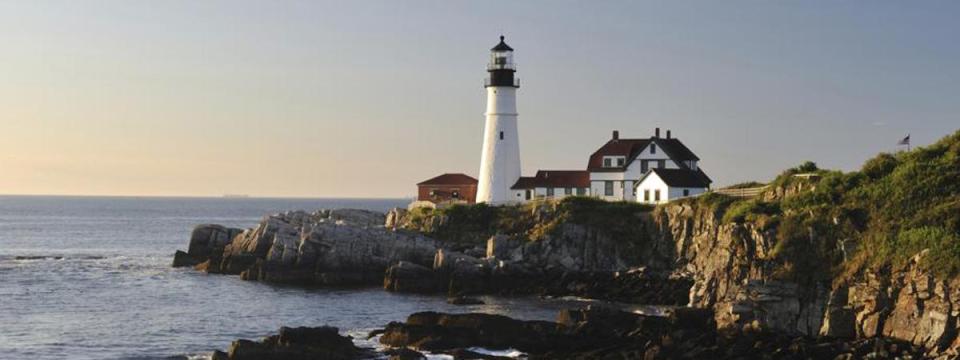
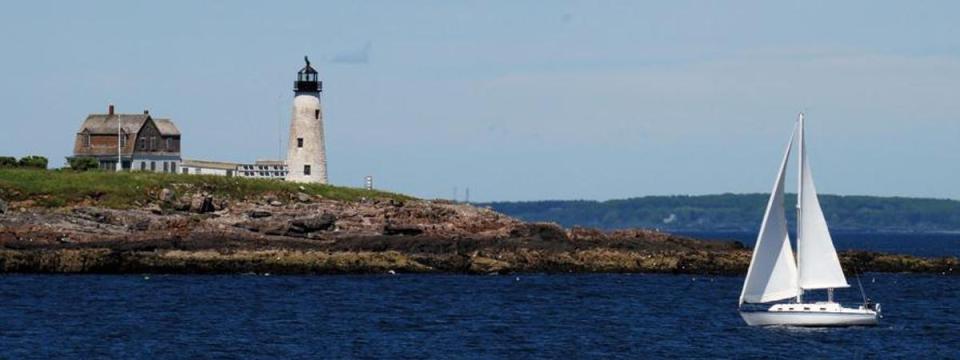


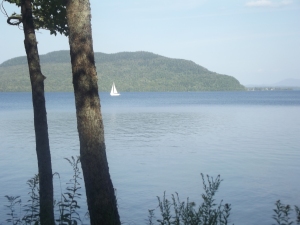
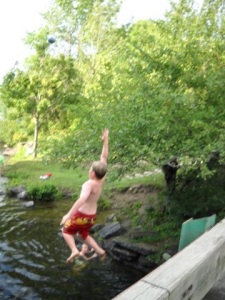

Reader Comments
Comment from Doug Williams on December 5, 2011
You missed our favorite historic Inn.The Nutmeg Inn cr 1777 located near Wilmington Vt 05363 (near Mt Snow between Bennington and Brattlboro VT on VT Rt 9) It has been recently renovated by new owners.. They have retained the old world charm while completely restoring the building. It has a 5 star rating on trip advisor.com The wide plank heart of pine wood floors are spectacular in the parlor, while the original carriage house has been converted into a cozy hearth side lounge. This is a MUST SEE. visit http://www.nutmeginn.com for pictures and information.